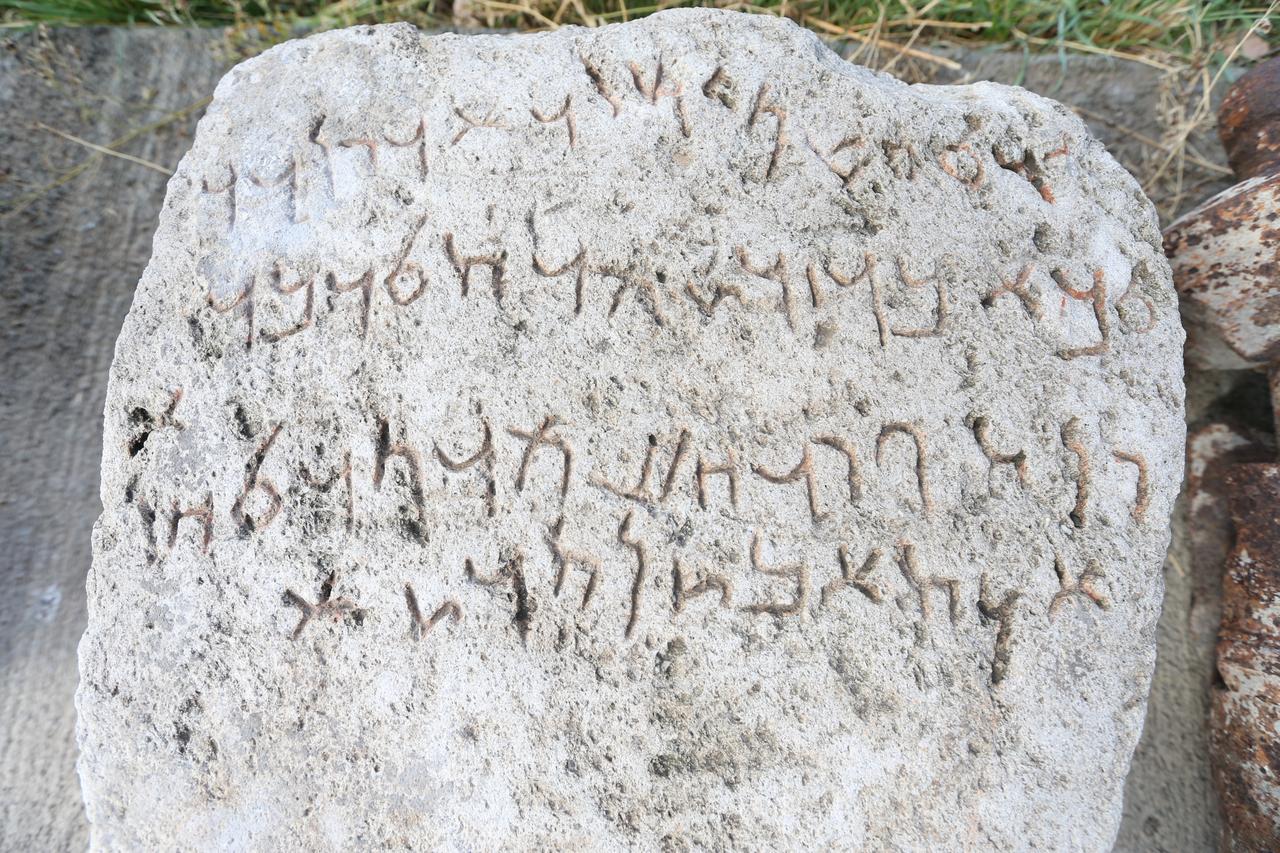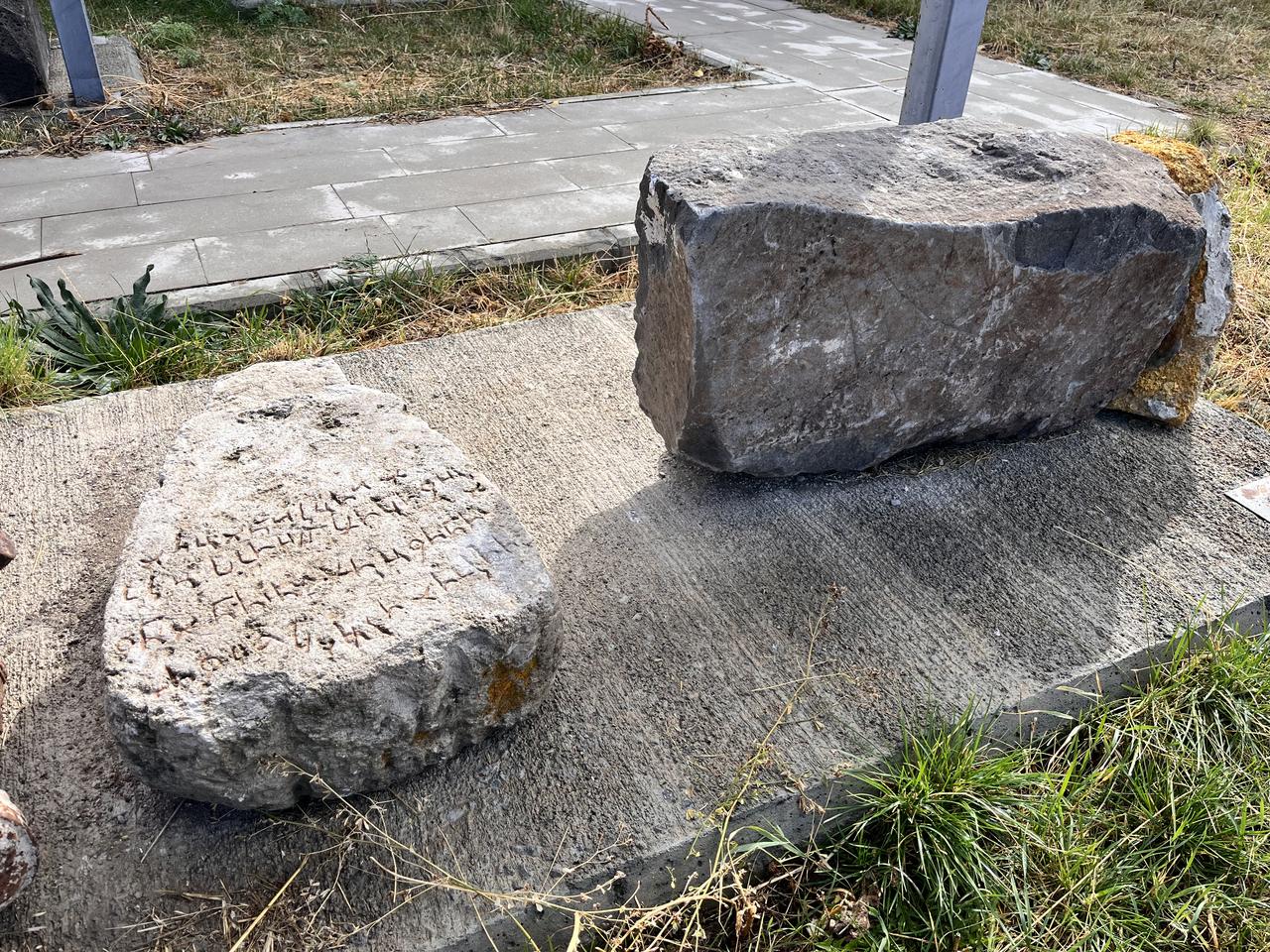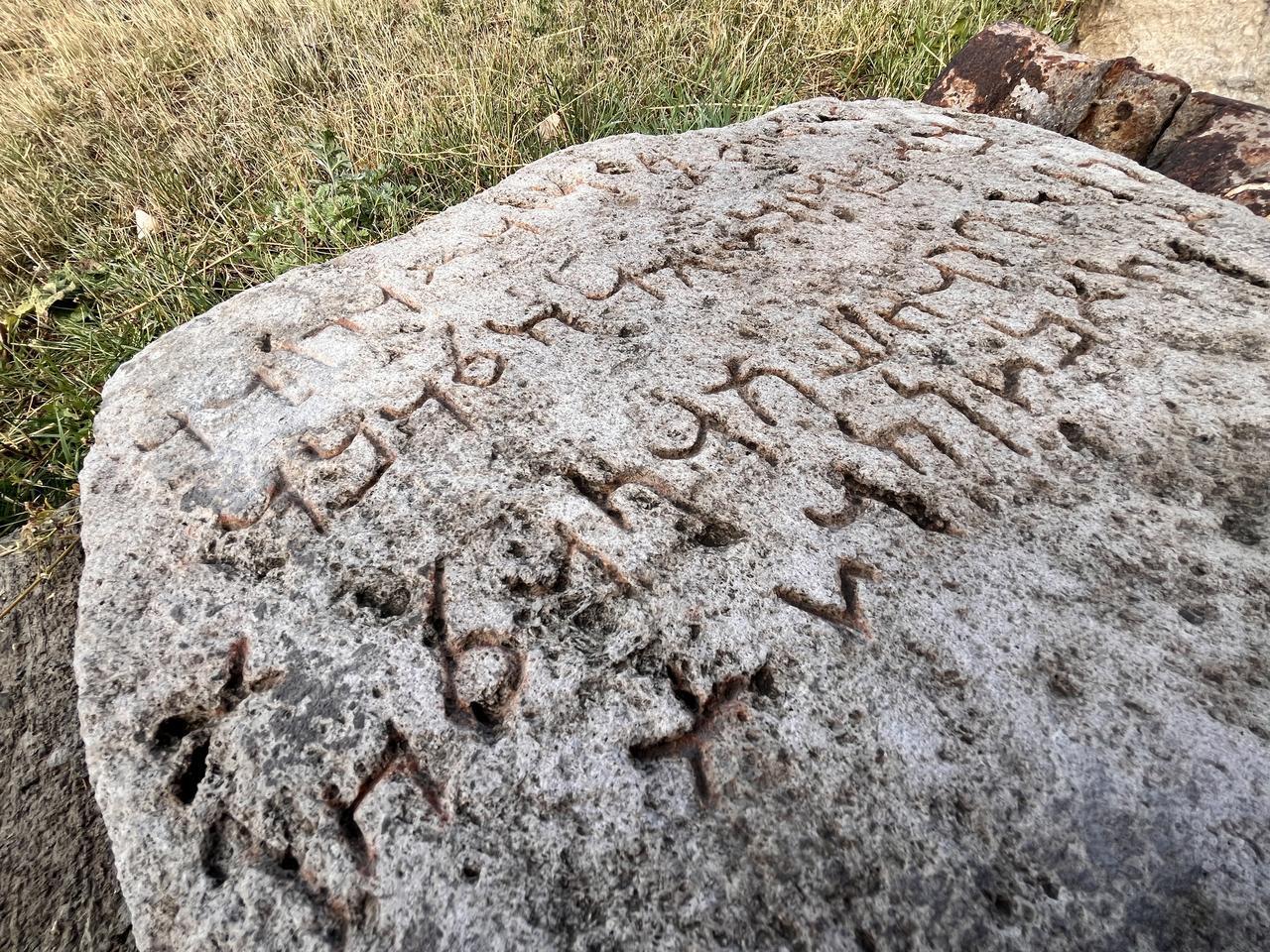
An Aramaic inscription found in a rural village in Ardahan, northeastern Türkiye, has been moved to the Kars Archaeology and Ethnography Museum for detailed analysis, marking the first time such a text has been documented in the Kars–Ardahan region.
The stone, secured by the local cultural heritage board, has attracted considerable academic interest due to the unexpected presence of Aramaic—a Semitic language widely used across the ancient Near East.
Museum authorities carried out a preliminary assessment shortly after the stone was brought into the museum courtyard.
According to Acting Museum Director Hakim Aslan, the inscription sits on an irregular rectangular base that appears to have been designed for placement on a stand.
Early readings indicate that the script is Aramaic, a finding that Aslan described as unprecedented for the two provinces, noting, “This is the first time we have encountered an inscription in this language in our region.”

Specialists have begun creating a transcription to make the weathered text readable. Initial interpretations suggest that the name of King Artaksiad, associated with the Seleucid period, appears in the wording. Researchers point out that several rulers bore this name, yet the reference may correspond to the earliest known king with that title.
The inscription is believed to reflect political shifts in the region following the Seleucid defeat and the period when Roman authority began to shape local governance. Experts think the stone may contain hints of these transitions, although the full meaning will emerge only after the transcription has been completed.

The museum’s team is also evaluating the possibility that the artifact functioned as a boundary stone. Previous work in the neighboring province of Igdir uncovered Aramaic inscriptions that served a similar purpose.
During this period, rulers often marked territorial edges either by carving texts into rock faces or placing stones to outline village limits. Once the inscription is fully deciphered, the stone will enter the museum inventory and be prepared for exhibition.